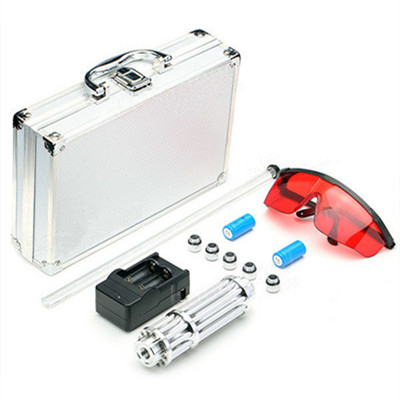Since Mayman invented the first laser pointer (ruby laser) in 1960, laser technology has achieved tremendous development and great achievements in the past 50 years, and has played an important role in many fields of human society. . The development of laser technology is changing rapidly, from the early gas laser (He-Ne laser), high power carbon dioxide laser, excimer laser, tunable dye laser, semiconductor laser, nanosecond and picosecond pulse laser, to the recent fiber laser and femtosecond Pulse lasers, more and more members of the laser family.
All aspects of performance (beam quality, mode morphology diversity, pulse width, peak power, average power, spatial coherence, temporal coherence, etc.) continue to improve. The application range of laser technology is also getting wider and wider, and has become an indispensable tool in scientific research, national defense, military, lighting, optical fiber communication, information sensing, storage and display, industrial production, biomedicine, environmental testing, etc. The earth is pushing these applications to a new level and level.
However, the existing laser technology has always had a shortcoming, that is, it can only emit light of a single wavelength or a narrow frequency band. How to expand the frequency of the laser to form an ultra-wideband, super-continuum, coherent white laser pointer covering the ultraviolet, visible and infrared bands is still a dream that has not been realized by mankind and is a scientific and technological problem worldwide. This is because the laser is composed of an optical resonator, a gain medium, and a pump source. The wavelength of the laser is determined by the energy level structure of the atoms, molecules or ions in the gain material. Due to the great limitations of the nature of the laser crystal material in the gain frequency range and gain bandwidth, the laser cannot produce lasers of any wavelength.
The nonlinear frequency conversion technology (frequency multiplication, sum frequency, difference frequency, parametric amplification, etc.) invented in 1961 can convert a fixed-wavelength laser output of a high-quality laser through a nonlinear crystal material to be difficult or fundamental. It is impossible to obtain the wavelength range directly. Therefore, the nonlinear frequency conversion technology is an important means to broaden the laser output wavelength, and the nonlinear crystal material is the basis of the technology. Non-linear frequency conversion requires phase matching. Under the condition of phase matching, the nonlinear process can obtain the maximum conversion efficiency. Birefringence matching and quasi-phase matching are two commonly used phase matching techniques and are suitable for different green laser pointer systems.
However, due to the dispersion effect of all current nonlinear crystals, the phase matching in the nonlinear process is usually not automatically satisfied. Under the birefringence matching and quasi-phase matching techniques, the frequency conversion range and bandwidth of nonlinear crystal materials still exist. Big limitations. In fact, the lasers produced by the existing laser systems are far from covering all wave bands, and there are no corresponding lasers at many important wavelengths. In addition, the bandwidth of the laser is also limited, the best titanium sapphire femtosecond laser can only cover the range of 300nm, and its center wavelength is 800nm. Since the invention of lasers and the birth of nonlinear optics 50 years ago, there is no plan to produce real white light lasers.
